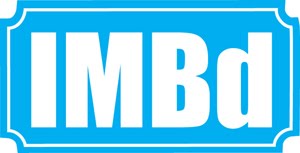 |
| Gandalf (Ian McKellen) and the dwarves prepare to battle the goblins and their king. |
The Hobbit: An Unexpected Journey is the first part in an epic trilogy adapted from J.R.R.Tolkien’s short children’s novel. The 1937 book would introduce young readers
to a mystical land known as Middle-earth and would be revisited in his epically
complex and mature Lord of the Rings trilogy, which as we all know, has
already been brought to the big screen in the form of three huge award-winning live-action movies. Those films -and this one, were made by New Zealand’s ambitiously
talented director Peter Jackson.
Unlike the Lord of
the Rings trilogy, The Hobbit is not a dark journey for the fate of the
world. It is an adventure story about Frodo’s uncle Bilbo Baggins (Martin Freeman of The BBC’s The Office and Sherlock) and a long adventure for
which he would embark, to help a group of ragtag dwarves reclaim their long
lost city and its treasure from a dangerous dragon. Along the way Bilbo will acquire a seemingly
innocent magic ring, which allows him to vanish when in danger. We all know
that there will be terrible consequences as a result of this find but that’s
another story.
While Jackson and
Co. condensed the hell out of the Lord of the Rings books for the screen (and
still wound up with three very long movies) they’ve taken the short Hobbit
book and expanded through fleshed-out events and characters simply referred to
in Tolkien’s literature and created entirely original material that doesn’t
seem too out of place. By the end of
this movie, they’ve appropriately covered about a third of the book and found a
good stopping place.
I’m a big fan of
these movies and the work of Peter Jackson, so I cannot claim to be without
bias. I’ve seen the movie twice now and will definitely see it again before it
leaves theaters. This is a movie filled with effective fan service and tells a
back story that feels way more natural and connected than another prequel
trilogy you many know of.
The visuals are a
feast of rich escapist eye candy, even when they don’t look perfectly real. I
love Martin Freeman as young Bilbo Baggins. He creates a humorously reluctant and
nervous rendition that seems worthy of Ian Holm’s approach to the character as
an old man.
The return of Gollum
in this movie is maybe the best part, with Andy Serkis giving a motion-capture
performance that may outdo his scenes in the other films (The animation on the
character has also advanced incredibly). The Dwarves are a fun bunch of
characters with potential for development that may be reserved for the next two
films. Most of the creatures look great. The Trolls and the Great Goblin thrive
in their comic nastiness.
While the addition
of Radagast the Brown Wizard (Sylvester McCoy), is delightfully quirky, I found
his sled pulled by rabbits and the action scene that surrounded it to be the
biggest eye-sore in the movie. It’s an original scene that I could do without.
The other unwanted element is a new antagonist for this trilogy, a pale warrior
Orc seeking to destroy the dwarves and find his way back to the videogame he
came from.
If you hated the Lord of the Rings movies, there’s no way you’ll like this one. It’s sillier,
more fantastical, and has way more computer animation. If you loved the Lord
of the Rings trilogy but never read The Hobbit you should be prepared for a
heavy dose of Disney-esque whimsy. If you’re like me, and can excuse Peter
Jackson of his hunger for excess (because you know you want it), prepare for a
lot of fun.
Now… How to see it?
Well this brings me to a unique subject this movie offers. There are multiple
ways to see this film ranging from standard-motion 2D (which will resemble the
experience of watching the previous trilogy) to seeing it in the new
controversial High Frame Rate 3D (which will not look the way you normally see
movies in the theater). The latter of those two is an experiment, which calls
to question the small amount of motion information we’ve been accustomed to seeing
throughout the history of cinema. I will dismiss claims that it is an
overwhelming experience, which will give you a headache. If anything, I thought
it made the motion seem more life-like and the 3D more comfortable. That
doesn’t mean that it felt normal to see characters in a fantasy movie move
around with the fluidity one would expect from a live sports broadcast. This is
a process I would recommend for the most open-minded of moviegoers, tech-heads,
and unbiased people who don’t see movies often. I would not suggest it to your
average movie fan. Thankfully for them, it down-converts to the standard frame
rate seamlessly. And there’s nothing wrong with seeing a bright and colorful
two-dimensional image on the big screen.




